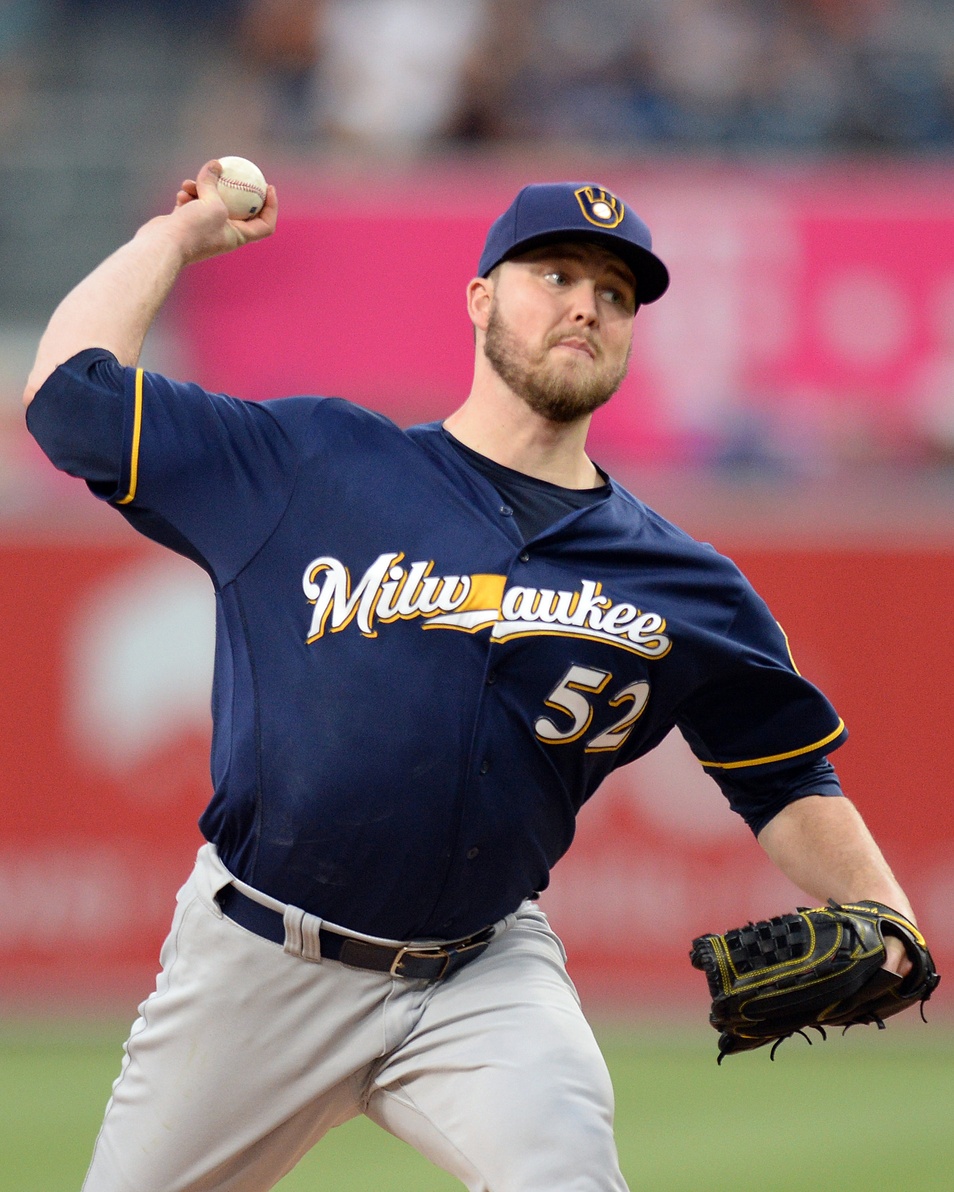Over the past two seasons, as numerous Brewers starters have come and gone, Jimmy Nelson has remained steady. He accrued 177.3 innings over 30 starts in 2015, and 179.3 innings over 32 starts in 2016; over that span, he ranked 14th in the NL in workload. And he pitched to some pretty solid results as well — he followed up a 102 ERA- last year with a 108 ERA- this year. No matter what else happened, we could always count on Nelson to take the mound every fifth day and hold his own.
But some metrics aren’t as fond of Nelson’s performance. According to BP’s DRA, he was 11 percent worse than average in 2015, and 21 percent worse in 2016 — the 14th- and third-worst marks in the majors, respectively. The peripherals don’t match up with the production, which could mean the reliable righty will regress going forward.
What’s caused ERA and DRA to diverge like this? A lot of the disparity stems from the area that ERA, by definition, doesn’t consider: unearned runs. Nelson allowed eight of those last year and 16 of them this year, which harmed his RA9 considerably:
| Year | ERA | URA | RA9 | DRA |
|---|---|---|---|---|
| 2015 | 4.11 | 0.41 | 4.52 | 4.89 |
| 2016 | 4.62 | 0.80 | 5.42 | 5.71 |
Since DRA is scaled to RA9, taking into account every run a pitcher gives up, this explains some of the difference. The Brewers haven’t fielded well since 2015 began — they ranked 17th in DRS during those seasons — and Nelson hasn’t aided his own cause in this regard: By DRS, he’s been the worst defensive pitcher in baseball over the past two years.
But even when we judge Nelson based on RA9, he still overperforms, as the last two columns of the above table illustrate. We need to delve into the inner workings behind DRA, which BP handily provides. Here’s how Nelson has done by each of the four “DRA Runs” groups:
| Year | NIP Runs | Hit Runs | Out Runs | Framing Runs |
|---|---|---|---|---|
| 2015 | 4.1 | 0.9 | 2.8 | -1.9 |
| 2016 | 11.2 | -3.3 | 2 | -1.1 |
These figures work in the opposite way you’d suspect — a negative one means he’s done better than average, while a positive one means he’s done worse than average. For Nelson, one of these metrics stands out above the rest: Not-In-Play Runs, which measure a pitcher’s skill with strikeouts, walks, and hit-by-pitches, none of which Nelson excels at.
Across 2015 and 2016, Nelson struck out 18.5 percent of the batters he faced and walked 9.7 percent. The former was the 13th-lowest among 63 qualified pitchers; the latter, the fourth-highest. Meanwhile, his 30 hit-by-pitches during that period tied for first in the majors with Chris Sale, who faced more than 200 more batters than Nelson did. Without success in the defense-independent metrics, he’s received nothing but scorn from DRA.
Earlier in the year, we might be able to attribute this to an error in DRA itself. A previous iteration of the metric had a bias against groundball pitchers — it consistently gave them higher DRAs than RA9s, suggesting they were getting unlucky. However, Jonathan Judge corrected this flaw in July, leaving Nelson and his 51 percent lifetime ground ball rate without an excuse.
DRA, in its current form, accurately summarizes how well a pitcher has done. We might think of Nelson as the dependable, respectable Brewers starter, but underneath that he really hasn’t done all that well. Once those unearned runs turn into earned runs — and those walks and HBPs start to come around more often — his ERA will start to rise. At 27, he’s certainly not old, so he could get better from here; if he doesn’t, though, he’ll see his DRA come back to haunt him.
